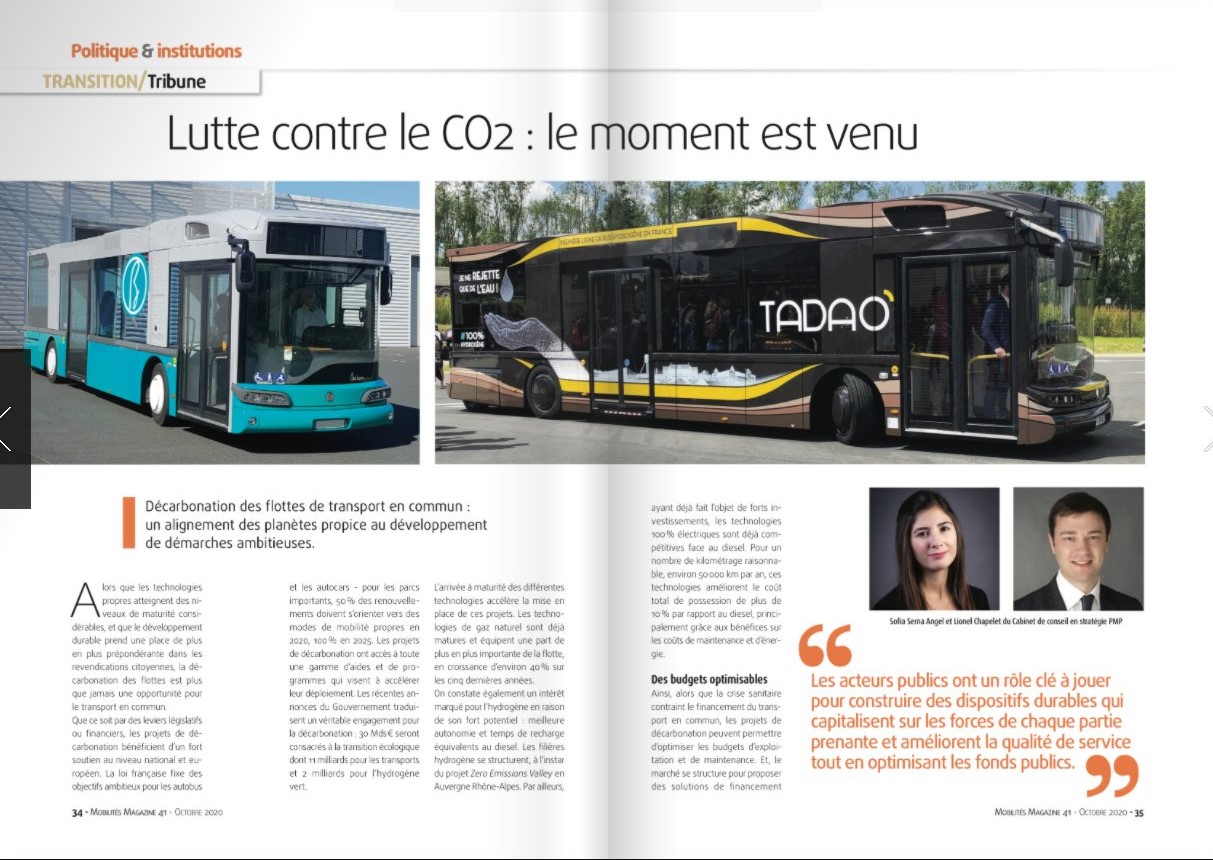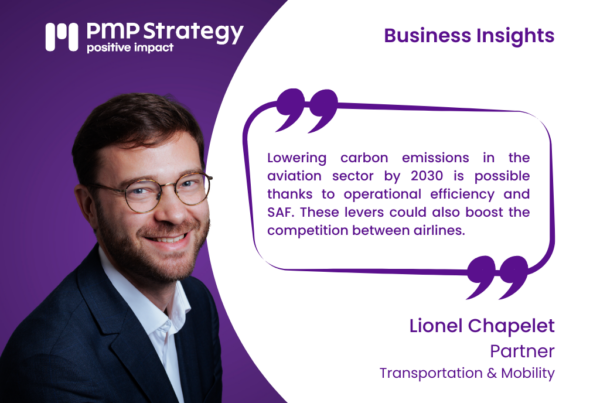Decarbonization of public transport fleets: an alignment of the planets conducive to the development of ambitious approaches
While clean technologies are reaching considerable levels of maturity, and as sustainable development takes an increasingly prominent place in citizens’ demands, the decarbonization of fleets is more than ever an opportunity for public transport.
Whether through legislative or financial levers, decarbonisation projects benefit from strong support at national and European level . French law sets ambitious objectives for buses and coaches – for large fleets, 50% of renewals must be oriented towards clean modes of mobility in 2020, 100% in 2025. Decarbonization projects have access to a whole range of range of aids and programs aimed at accelerating their deployment. The government’s recent announcements reflect a real commitment to decarbonization: 30 billion euros will be devoted to ecological transition, including 11 billion for transport and 2 billion for green hydrogen.
The maturity of the different technologies accelerates the implementation of these projects. The natural gas technologies are already mature and equip a share of more and more of the fleet, an increase of about 40% over the last five years. There is also a marked interest in hydrogen because of its great potential: better autonomy and recharge times equivalent to diesel. The hydrogen sectors are being structured, like the Zero Emissions Valley project in Auvergne Rhône-Alpes. In addition, having already been the subject of strong investments, 100% electric technologies are already competitive.against diesel. For a reasonable number of mileage, around 50,000 km per year, these technologies improve the total cost of ownership by more than 10% compared to diesel, mainly thanks to the benefits on maintenance and energy costs.
Thus, while the health crisis constrains the financing of public transport, decarbonization projects can help optimize operating and maintenance budgets. And, the market is structured to offer financing solutions that secure the achievement of performance improvement objectives: battery leasing, turnkey solutions for the supply of rolling stock and construction, operation and maintenance of depots and infrastructure. recharging, or even, assemblies to deconsolidate assets.
These types of arrangements involve profound changes in the organization of the operation of transport networks, and can lead to a transfer of risks – and therefore margins – from transport operators to manufacturers. In fact, public actors have a key role to play in building sustainable systems that capitalize on the strengths of each stakeholder and improve the quality of service while optimizing public funds. In a context of economic and social crisis, they also have the opportunity to take advantage of decarbonization to support the emergence of sustainable sectors, generating local jobs, and contributing to the attractiveness of their territory.
Maturity of technologies, financing solutions, windfall effects linked to significant public investment… public actors now have all the cards in hand to successfully decarbonise public transport.
Sofia Serna Angel & Lionel Rosary from the Mobility, Energy and Tourism Pole


Article publié dans Mobilité Magazine n°41p.34-36 – Octobre 2020





